#openshift development
Explore tagged Tumblr posts
Text
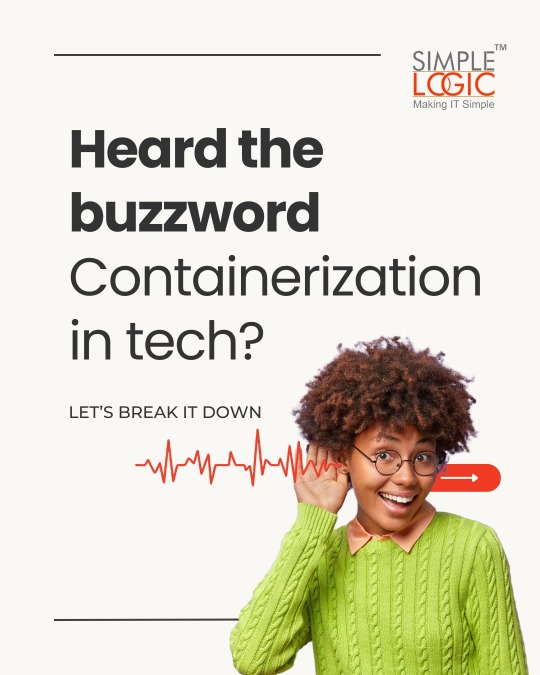
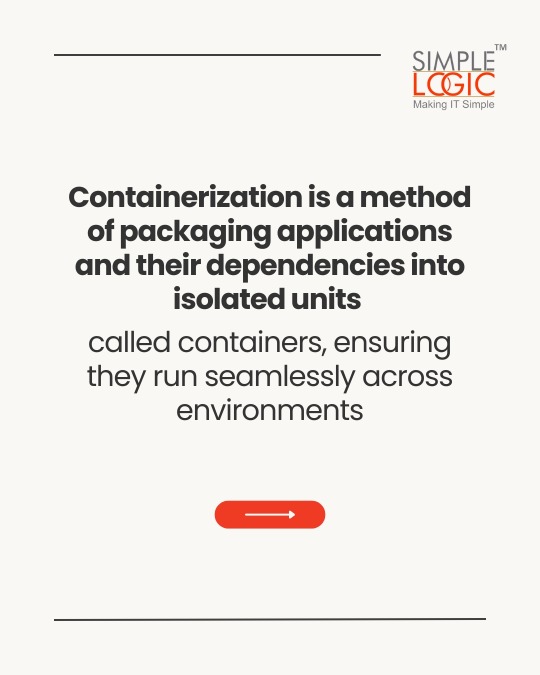
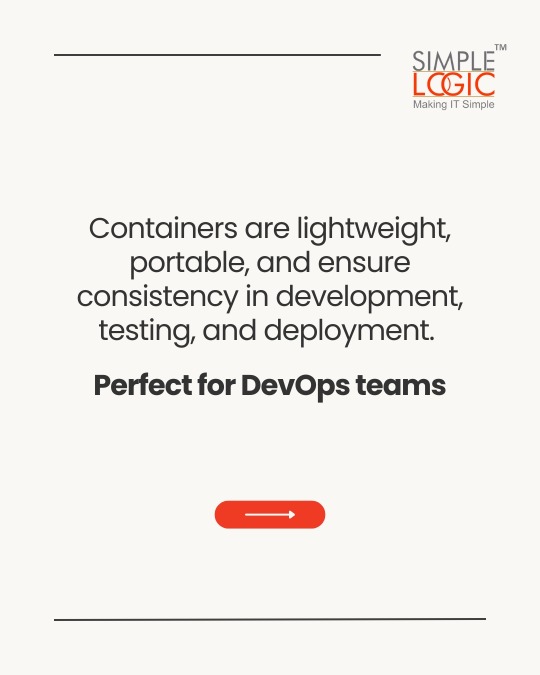
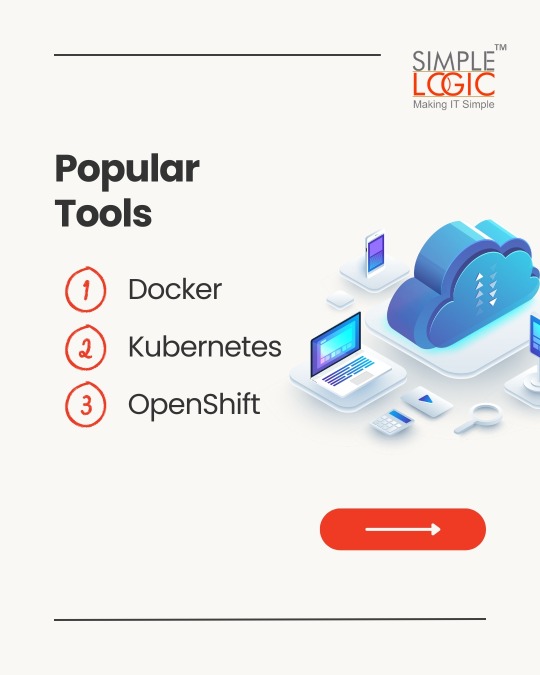
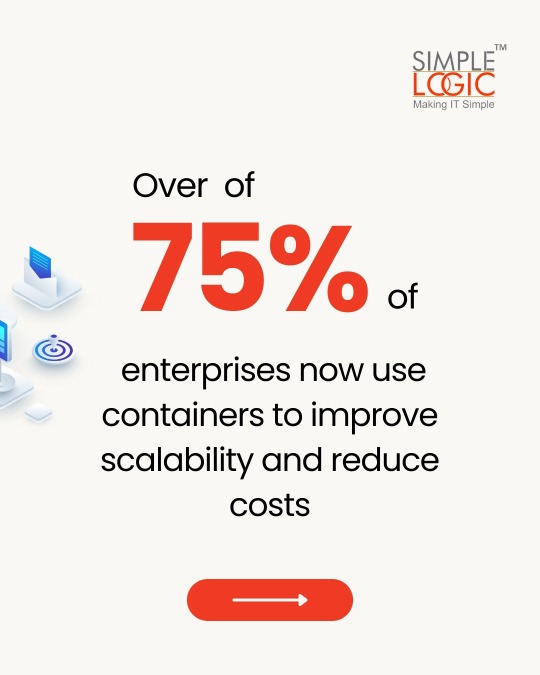

#TechKnowledge Have you heard of Containerization?
Swipe to discover what it is and how it can impact your digital security! 🚀
👉 Stay tuned for more simple and insightful tech tips by following us.
🌐 Learn more: https://simplelogic-it.com/
💻 Explore the latest in #technology on our Blog Page: https://simplelogic-it.com/blogs/
✨ Looking for your next career opportunity? Check out our #Careers page for exciting roles: https://simplelogic-it.com/careers/
#techterms#technologyterms#techcommunity#simplelogicit#makingitsimple#techinsight#techtalk#containerization#application#development#testing#deployment#devops#docker#kubernets#openshift#scalability#security#knowledgeIispower#makeitsimple#simplelogic#didyouknow
0 notes
Text
CLOUD COMPUTING: A CONCEPT OF NEW ERA FOR DATA SCIENCE
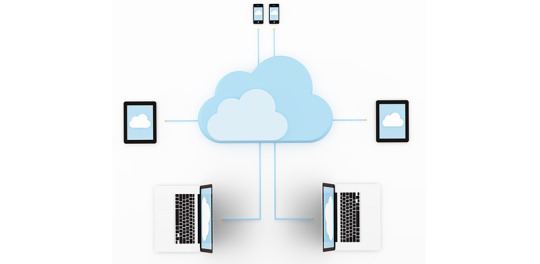
Cloud Computing is the most interesting and evolving topic in computing in the recent decade. The concept of storing data or accessing software from another computer that you are not aware of seems to be confusing to many users. Most the people/organizations that use cloud computing on their daily basis claim that they do not understand the subject of cloud computing. But the concept of cloud computing is not as confusing as it sounds. Cloud Computing is a type of service where the computer resources are sent over a network. In simple words, the concept of cloud computing can be compared to the electricity supply that we daily use. We do not have to bother how the electricity is made and transported to our houses or we do not have to worry from where the electricity is coming from, all we do is just use it. The ideology behind the cloud computing is also the same: People/organizations can simply use it. This concept is a huge and major development of the decade in computing.
Cloud computing is a service that is provided to the user who can sit in one location and remotely access the data or software or program applications from another location. Usually, this process is done with the use of a web browser over a network i.e., in most cases over the internet. Nowadays browsers and the internet are easily usable on almost all the devices that people are using these days. If the user wants to access a file in his device and does not have the necessary software to access that file, then the user would take the help of cloud computing to access that file with the help of the internet.
Cloud computing provide over hundreds and thousands of services and one of the most used services of cloud computing is the cloud storage. All these services are accessible to the public throughout the globe and they do not require to have the software on their devices. The general public can access and utilize these services from the cloud with the help of the internet. These services will be free to an extent and then later the users will be billed for further usage. Few of the well-known cloud services that are drop box, Sugar Sync, Amazon Cloud Drive, Google Docs etc.
Finally, that the use of cloud services is not guaranteed let it be because of the technical problems or because the services go out of business. The example they have used is about the Mega upload, a service that was banned and closed by the government of U.S and the FBI for their illegal file sharing allegations. And due to this, they had to delete all the files in their storage and due to which the customers cannot get their files back from the storage.
Service Models Cloud Software as a Service Use the provider's applications running on a cloud infrastructure Accessible from various client devices through thin client interface such as a web browser Consumer does not manage or control the underlying cloud infrastructure including network, servers, operating systems, storage
Google Apps, Microsoft Office 365, Petrosoft, Onlive, GT Nexus, Marketo, Casengo, TradeCard, Rally Software, Salesforce, ExactTarget and CallidusCloud
Cloud Platform as a Service Cloud providers deliver a computing platform, typically including operating system, programming language execution environment, database, and web server Application developers can develop and run their software solutions on a cloud platform without the cost and complexity of buying and managing the underlying hardware and software layers
AWS Elastic Beanstalk, Cloud Foundry, Heroku, Force.com, Engine Yard, Mendix, OpenShift, Google App Engine, AppScale, Windows Azure Cloud Services, OrangeScape and Jelastic.
Cloud Infrastructure as a Service Cloud provider offers processing, storage, networks, and other fundamental computing resources Consumer is able to deploy and run arbitrary software, which can include operating systems and applications Amazon EC2, Google Compute Engine, HP Cloud, Joyent, Linode, NaviSite, Rackspace, Windows Azure, ReadySpace Cloud Services, and Internap Agile
Deployment Models Private Cloud: Cloud infrastructure is operated solely for an organization Community Cloud : Shared by several organizations and supports a specific community that has shared concerns Public Cloud: Cloud infrastructure is made available to the general public Hybrid Cloud: Cloud infrastructure is a composition of two or more clouds
Advantages of Cloud Computing • Improved performance • Better performance for large programs • Unlimited storage capacity and computing power • Reduced software costs • Universal document access • Just computer with internet connection is required • Instant software updates • No need to pay for or download an upgrade
Disadvantages of Cloud Computing • Requires a constant Internet connection • Does not work well with low-speed connections • Even with a fast connection, web-based applications can sometimes be slower than accessing a similar software program on your desktop PC • Everything about the program, from the interface to the current document, has to be sent back and forth from your computer to the computers in the cloud
About Rang Technologies: Headquartered in New Jersey, Rang Technologies has dedicated over a decade delivering innovative solutions and best talent to help businesses get the most out of the latest technologies in their digital transformation journey. Read More...
#CloudComputing#CloudTech#HybridCloud#ArtificialIntelligence#MachineLearning#Rangtechnologies#Ranghealthcare#Ranglifesciences
9 notes
·
View notes
Text
Developing and Deploying AI/ML Applications on Red Hat OpenShift AI (AI268)
As AI and Machine Learning continue to reshape industries, the need for scalable, secure, and efficient platforms to build and deploy these workloads is more critical than ever. That’s where Red Hat OpenShift AI comes in—a powerful solution designed to operationalize AI/ML at scale across hybrid and multicloud environments.
With the AI268 course – Developing and Deploying AI/ML Applications on Red Hat OpenShift AI – developers, data scientists, and IT professionals can learn to build intelligent applications using enterprise-grade tools and MLOps practices on a container-based platform.
🌟 What is Red Hat OpenShift AI?
Red Hat OpenShift AI (formerly Red Hat OpenShift Data Science) is a comprehensive, Kubernetes-native platform tailored for developing, training, testing, and deploying machine learning models in a consistent and governed way. It provides tools like:
Jupyter Notebooks
TensorFlow, PyTorch, Scikit-learn
Apache Spark
KServe & OpenVINO for inference
Pipelines & GitOps for MLOps
The platform ensures seamless collaboration between data scientists, ML engineers, and developers—without the overhead of managing infrastructure.
📘 Course Overview: What You’ll Learn in AI268
AI268 focuses on equipping learners with hands-on skills in designing, developing, and deploying AI/ML workloads on Red Hat OpenShift AI. Here’s a quick snapshot of the course outcomes:
✅ 1. Explore OpenShift AI Components
Understand the ecosystem—JupyterHub, Pipelines, Model Serving, GPU support, and the OperatorHub.
✅ 2. Data Science Workspaces
Set up and manage development environments using Jupyter notebooks integrated with OpenShift’s security and scalability features.
✅ 3. Training and Managing Models
Use libraries like PyTorch or Scikit-learn to train models. Learn to leverage pipelines for versioning and reproducibility.
✅ 4. MLOps Integration
Implement CI/CD for ML using OpenShift Pipelines and GitOps to manage lifecycle workflows across environments.
✅ 5. Model Deployment and Inference
Serve models using tools like KServe, automate inference pipelines, and monitor performance in real-time.
🧠 Why Take This Course?
Whether you're a data scientist looking to deploy models into production or a developer aiming to integrate AI into your apps, AI268 bridges the gap between experimentation and scalable delivery. The course is ideal for:
Data Scientists exploring enterprise deployment techniques
DevOps/MLOps Engineers automating AI pipelines
Developers integrating ML models into cloud-native applications
Architects designing AI-first enterprise solutions
🎯 Final Thoughts
AI/ML is no longer confined to research labs—it’s at the core of digital transformation across sectors. With Red Hat OpenShift AI, you get an enterprise-ready MLOps platform that lets you go from notebook to production with confidence.
If you're looking to modernize your AI/ML strategy and unlock true operational value, AI268 is your launchpad.
👉 Ready to build and deploy smarter, faster, and at scale? Join the AI268 course and start your journey into Enterprise AI with Red Hat OpenShift.
For more details www.hawkstack.com
0 notes
Text
How does cloud computing enable faster business scaling for me
Cloud Computing Market was valued at USD 605.3 billion in 2023 and is expected to reach USD 2619.2 billion by 2032, growing at a CAGR of 17.7% from 2024-2032.
Cloud Computing Market is witnessing unprecedented growth as businesses across sectors rapidly adopt digital infrastructure to boost agility, scalability, and cost-efficiency. From small startups to global enterprises, organizations are shifting workloads to the cloud to enhance productivity, improve collaboration, and ensure business continuity.
U.S. Market Leads Cloud Innovation with Expanding Enterprise Adoption
Cloud Computing Market continues to expand as emerging technologies such as AI, machine learning, and edge computing become more integrated into enterprise strategies. With increased reliance on hybrid and multi-cloud environments, providers are innovating faster to deliver seamless, secure, and flexible solutions.
Get Sample Copy of This Report: https://www.snsinsider.com/sample-request/2779
Market Keyplayers:
Amazon Web Services (AWS) (EC2, S3)
Microsoft (Azure Virtual Machines, Azure Storage)
Google Cloud (Google Compute Engine, Google Kubernetes Engine)
IBM (IBM Cloud Private, IBM Cloud Kubernetes Service)
Oracle (Oracle Cloud Infrastructure, Oracle Autonomous Database)
Alibaba Cloud (Elastic Compute Service, Object Storage Service)
Salesforce (Salesforce Sales Cloud, Salesforce Service Cloud)
SAP (SAP HANA Enterprise Cloud, SAP Business Technology Platform)
VMware (VMware vCloud, VMware Cloud on AWS)
Rackspace (Rackspace Cloud Servers, Rackspace Cloud Files)
Dell Technologies (VMware Cloud Foundation, Virtustream Enterprise Cloud)
Hewlett Packard Enterprise (HPE) (HPE GreenLake, HPE Helion)
Tencent Cloud (Tencent Cloud Compute, Tencent Cloud Object Storage)
Adobe (Adobe Creative Cloud, Adobe Document Cloud)
Red Hat (OpenShift, Red Hat Cloud Infrastructure)
Cisco Systems (Cisco Webex Cloud, Cisco Intersight)
Fujitsu (Fujitsu Cloud Service K5, Fujitsu Cloud IaaS Trusted Public S5)
Huawei (Huawei Cloud ECS, Huawei Cloud OBS)
Workday (Workday Human Capital Management, Workday Financial Management)
Market Analysis
The global cloud computing landscape is being redefined by increasing demand for on-demand IT services, software-as-a-service (SaaS) platforms, and data-intensive workloads. In the U.S., cloud adoption is accelerating due to widespread digital transformation initiatives and investments in advanced technologies. Europe is also experiencing significant growth, driven by data sovereignty concerns and regulatory frameworks like GDPR, which are encouraging localized cloud infrastructure development.
Market Trends
Surge in hybrid and multi-cloud deployments
Integration of AI and ML for intelligent workload management
Growth of edge computing reducing latency in critical applications
Expansion of industry-specific cloud solutions (e.g., healthcare, finance)
Emphasis on cybersecurity and compliance-ready infrastructure
Rise of serverless computing for agile development and scalability
Sustainability focus driving adoption of green data centers
Market Scope
Cloud computing's scope spans nearly every industry, supporting digital-first strategies, automation, and real-time analytics. Organizations are leveraging cloud platforms not just for storage, but as a foundation for innovation, resilience, and global expansion.
On-demand infrastructure scaling for startups and enterprises
Support for remote workforces with secure virtual environments
Cross-border collaboration powered by cloud-native tools
Cloud-based disaster recovery solutions
AI-as-a-Service and Data-as-a-Service models gaining traction
Regulatory-compliant cloud hosting driving European market growth
Forecast Outlook
The future of the Cloud Computing Market is driven by relentless demand for agile digital infrastructure. As cloud-native technologies become standard in enterprise IT strategies, both U.S. and European markets are expected to play pivotal roles. Advanced cloud security, integrated data services, and sustainability-focused infrastructure will be at the forefront of upcoming innovations. Strategic alliances between cloud providers and industry players will further fuel momentum, especially in AI, 5G, and IoT-powered environments.
Access Complete Report: https://www.snsinsider.com/reports/cloud-computing-market-2779
Conclusion
As the digital economy accelerates, the Cloud Computing Market stands at the core of modern enterprise transformation. It empowers businesses with the tools to scale intelligently, respond to market shifts rapidly, and innovate without limits. For leaders across the U.S. and Europe, embracing cloud technology is no longer optional—it's the strategic engine driving competitive advantage and sustainable growth.
Related Reports:
U.S.A drives innovation as Data Monetization Market gains momentum
U.S.A Wealth Management Platform Market Poised for Strategic Digital Transformation
U.S.A Trade Management Software Market Sees Surge Amid Cross-Border Trade Expansion
About Us:
SNS Insider is one of the leading market research and consulting agencies that dominates the market research industry globally. Our company's aim is to give clients the knowledge they require in order to function in changing circumstances. In order to give you current, accurate market data, consumer insights, and opinions so that you can make decisions with confidence, we employ a variety of techniques, including surveys, video talks, and focus groups around the world.
Contact Us:
Jagney Dave - Vice President of Client Engagement
Phone: +1-315 636 4242 (US) | +44- 20 3290 5010 (UK)
Mail us: [email protected]
0 notes
Text
OpenShift DO180 (Red Hat OpenShift I: Containers & Kubernetes)
This course provides a comprehensive introduction to container technologies and the Red Hat OpenShift Container Platform. Designed for IT professionals and developers, it focuses on building, deploying, and managing containerized applications using industry-standard tools like Podman and Kubernetes. By the end of this course, you'll gain hands-on experience in deploying applications on OpenShift and managing their lifecycle.
Show Less
0 notes
Text
Riding the Cloud Wave: Red Hat Training in Ahmedabad
Cloud computing is not only a way to access and use technology services and resources remotely, but the foundation of IT infrastructure relies on it. To enable businesses to move toward automation and containerisation, the Red Hat OpenShift platform facilitates cloud-native software development. Open-source platforms and hands-on practical skills are crucial now more than ever for success in the competitive tech industry.
If you are from Gujarat, an opportunity for career advancement lies in attending the Red Hat Training and Certification in Ahmedabad, which prepares you for the new in-demand positions.
Why Red Hat Training and Certification in Ahmedabad?
With a good reputation in the field of technology, Ahmedabad is also known as an educational hub. Red Hat courses in Ahmedabad are designed for fast-tracked professional development.
Here is what a student can look out for:
IT Industry Accredited Certification – Boost your career as you get properly recognised skills by IT professionals with the guiding documents that will help you gain higher positions.
Contemporary Use of OpenShift – Utilise Red Hat's flagship platform to learn how to set up, deploy, and, thus, manage containers along with Kubernetes.
Post Secondary Learning Experience – Classes are thus structured according to international standards and industry practices and address real-life challenges.
Now, DevOps engineers, system admins, and cloud developers are enabled with the new tools to help them complete their engineering goals. Whatever path they pursue with this training, they can now succeed.
Red Hat Training Ahmedabad: What to Expect
Alongside theory, learners will acquire Red Hat Training Ahmedabad through an immersive approach, including:
Teaching sessions and labs conducted by trainers
Thus, preparation for certification examinations
Learning paths dependent on roles (Like RHCSA, RHCE, OpenShift Admin, et cetera)
Access to Red Hat-endorsed resources
And so much more; with everything said above, you can move from novice to certified in a matter of weeks, which is favourable when considering time and financial investments.
Accelerate Earning Your Certification with Local Access
Even if you are a complete novice to Linux or an experienced system administrator, you will find everything you need, from instructor-led training to exam simulations in Ahmedabad, on Red Hat’s learning paths. Courses are taught using Red Hat training materials, which makes sure that you will be employable from the outset.
Conclusion: Elevate your cloud skillset The need for Red Hat Training Ahmedabad with certified professionals is increasing, and with the adoption of the cloud, there is no better time to jump in. For those wishing to remain a step ahead of others in the industry, look no further than Red Hat Training and Certification in Ahmedabad, which acts as a springboard for a powerful career in IT. Visit Highsky IT Solutions to learn more about Red Hat courses and certification paths.
#linux certification ahmedabad#red hat certification ahmedabad#linux online courses in ahmedabad#data science training ahmedabad#rhce rhcsa training ahmedabad#aws security training ahmedabad#docker training ahmedabad#red hat training ahmedabad#microsoft azure cloud certification#python courses in ahmedabad
0 notes
Text
Kubernetes Cluster Management at Scale: Challenges and Solutions
As Kubernetes has become the cornerstone of modern cloud-native infrastructure, managing it at scale is a growing challenge for enterprises. While Kubernetes excels in orchestrating containers efficiently, managing multiple clusters across teams, environments, and regions presents a new level of operational complexity.
In this blog, we’ll explore the key challenges of Kubernetes cluster management at scale and offer actionable solutions, tools, and best practices to help engineering teams build scalable, secure, and maintainable Kubernetes environments.
Why Scaling Kubernetes Is Challenging
Kubernetes is designed for scalability—but only when implemented with foresight. As organizations expand from a single cluster to dozens or even hundreds, they encounter several operational hurdles.
Key Challenges:
1. Operational Overhead
Maintaining multiple clusters means managing upgrades, backups, security patches, and resource optimization—multiplied by every environment (dev, staging, prod). Without centralized tooling, this overhead can spiral quickly.
2. Configuration Drift
Cluster configurations often diverge over time, causing inconsistent behavior, deployment errors, or compliance risks. Manual updates make it difficult to maintain consistency.
3. Observability and Monitoring
Standard logging and monitoring solutions often fail to scale with the ephemeral and dynamic nature of containers. Observability becomes noisy and fragmented without standardization.
4. Resource Isolation and Multi-Tenancy
Balancing shared infrastructure with security and performance for different teams or business units is tricky. Kubernetes namespaces alone may not provide sufficient isolation.
5. Security and Policy Enforcement
Enforcing consistent RBAC policies, network segmentation, and compliance rules across multiple clusters can lead to blind spots and misconfigurations.
Best Practices and Scalable Solutions
To manage Kubernetes at scale effectively, enterprises need a layered, automation-driven strategy. Here are the key components:
1. GitOps for Declarative Infrastructure Management
GitOps leverages Git as the source of truth for infrastructure and application deployment. With tools like ArgoCD or Flux, you can:
Apply consistent configurations across clusters.
Automatically detect and rollback configuration drifts.
Audit all changes through Git commit history.
Benefits:
· Immutable infrastructure
· Easier rollbacks
· Team collaboration and visibility
2. Centralized Cluster Management Platforms
Use centralized control planes to manage the lifecycle of multiple clusters. Popular tools include:
Rancher – Simplified Kubernetes management with RBAC and policy controls.
Red Hat OpenShift – Enterprise-grade PaaS built on Kubernetes.
VMware Tanzu Mission Control – Unified policy and lifecycle management.
Google Anthos / Azure Arc / Amazon EKS Anywhere – Cloud-native solutions with hybrid/multi-cloud support.
Benefits:
· Unified view of all clusters
· Role-based access control (RBAC)
· Policy enforcement at scale
3. Standardization with Helm, Kustomize, and CRDs
Avoid bespoke configurations per cluster. Use templating and overlays:
Helm: Define and deploy repeatable Kubernetes manifests.
Kustomize: Customize raw YAMLs without forking.
Custom Resource Definitions (CRDs): Extend Kubernetes API to include enterprise-specific configurations.
Pro Tip: Store and manage these configurations in Git repositories following GitOps practices.
4. Scalable Observability Stack
Deploy a centralized observability solution to maintain visibility across environments.
Prometheus + Thanos: For multi-cluster metrics aggregation.
Grafana: For dashboards and alerting.
Loki or ELK Stack: For log aggregation.
Jaeger or OpenTelemetry: For tracing and performance monitoring.
Benefits:
· Cluster health transparency
· Proactive issue detection
· Developer fliendly insights
5. Policy-as-Code and Security Automation
Enforce security and compliance policies consistently:
OPA + Gatekeeper: Define and enforce security policies (e.g., restrict container images, enforce labels).
Kyverno: Kubernetes-native policy engine for validation and mutation.
Falco: Real-time runtime security monitoring.
Kube-bench: Run CIS Kubernetes benchmark checks automatically.
Security Tip: Regularly scan cluster and workloads using tools like Trivy, Kube-hunter, or Aqua Security.
6. Autoscaling and Cost Optimization
To avoid resource wastage or service degradation:
Horizontal Pod Autoscaler (HPA) – Auto-scales pods based on metrics.
Vertical Pod Autoscaler (VPA) – Adjusts container resources.
Cluster Autoscaler – Scales nodes up/down based on workload.
Karpenter (AWS) – Next-gen open-source autoscaler with rapid provisioning.
Conclusion
As Kubernetes adoption matures, organizations must rethink their management strategy to accommodate growth, reliability, and governance. The transition from a handful of clusters to enterprise-wide Kubernetes infrastructure requires automation, observability, and strong policy enforcement.
By adopting GitOps, centralized control planes, standardized templates, and automated policy tools, enterprises can achieve Kubernetes cluster management at scale—without compromising on security, reliability, or developer velocity.
0 notes
Text
Red Hat readies Advanced Developer Suite
Red Hat has announced Red Hat Advanced Developer Suite, an integrated suite of tools for developers that includes an internal developer platform, trusted software supply chain capabilities, platform application capabilities, and streamlined tools that simplify onboarding, development, and modernization. Billed as part of the Red Hat OpenShift cloud application platform, Red Hat Advanced Developer…
0 notes
Text
Modern Tools Enhance Data Governance and PII Management Compliance

Modern data governance focuses on effectively managing Personally Identifiable Information (PII). Tools like IBM Cloud Pak for Data (CP4D), Red Hat OpenShift, and Kubernetes provide organizations with comprehensive solutions to navigate complex regulatory requirements, including GDPR (General Data Protection Regulation) and CCPA (California Consumer Privacy Act). These platforms offer secure data handling, lineage tracking, and governance automation, helping businesses stay compliant while deriving value from their data.
PII management involves identifying, protecting, and ensuring the lawful use of sensitive data. Key requirements such as transparency, consent, and safeguards are essential to mitigate risks like breaches or misuse. IBM Cloud Pak for Data integrates governance, lineage tracking, and AI-driven insights into a unified framework, simplifying metadata management and ensuring compliance. It also enables self-service access to data catalogs, making it easier for authorized users to access and manage sensitive data securely.
Advanced IBM Cloud Pak for Data features include automated policy reinforcement and role-based access that ensure that PII remains protected while supporting analytics and machine learning applications. This approach simplifies compliance, minimizing the manual workload typically associated with regulatory adherence.
The growing adoption of multi-cloud environments has necessitated the development of platforms such as Informatica and Collibra to offer complementary governance tools that enhance PII protection. These solutions use AI-supported insights, automated data lineage, and centralized policy management to help organizations seeking to improve their data governance frameworks.
Mr. Valihora has extensive experience with IBM InfoSphere Information Server “MicroServices” products (which are built upon Red Hat Enterprise Linux Technology – in conjunction with Docker\Kubernetes.) Tim Valihora - President of TVMG Consulting Inc. - has extensive experience with respect to:
IBM InfoSphere Information Server “Traditional” (IIS v11.7.x)
IBM Cloud PAK for Data (CP4D)
IBM “DataStage Anywhere”
Mr. Valihora is a US based (Vero Beach, FL) Data Governance specialist within the IBM InfoSphere Information Server (IIS) software suite and is also Cloud Certified on Collibra Data Governance Center.
Career Highlights Include: Technical Architecture, IIS installations, post-install-configuration, SDLC mentoring, ETL programming, performance-tuning, client-side training (including administrators, developers or business analysis) on all of the over 15 out-of-the-box IBM IIS products Over 180 Successful IBM IIS installs - Including the GRID Tool-Kit for DataStage (GTK), MPP, SMP, Multiple-Engines, Clustered Xmeta, Clustered WAS, Active-Passive Mirroring and Oracle Real Application Clustered “IADB” or “Xmeta” configurations. Tim Valihora has been credited with performance tuning the words fastest DataStage job which clocked in at 1.27 Billion rows of inserts\updates every 12 minutes (using the Dynamic Grid ToolKit (GTK) for DataStage (DS) with a configuration file that utilized 8 compute-nodes - each with 12 CPU cores and 64 GB of RAM.)
0 notes
Text
Senior Software Developer (Java/ Springboot)
Job Summary You will work with the Retail Credit Cloud Integration team. We write Java SpringBoot microservices in an agile environment and deploy them to OpenShift Kubernetes using a fully automated Continuous Integration / Continuous Deployment (CI/CD) DevOps pipeline.We are looking for individuals with a passion for building quality middleware solutions and solving business problems through…
0 notes
Text
Why Should your GPU cloud management software be Kubernetes agnostic?
As organizations, including Neoclouds and sovereign entities, develop GPU cloud infrastructures to support AI workloads, many cloud management solutions come bundled with a specific Kubernetes distribution. While this bundling might appear convenient initially, it often leads to significant long-term challenges, primarily due to vendor lock-in.
Such tightly integrated solutions can become inflexible, incompatible with existing enterprise IT environments, and difficult to scale across diverse infrastructures. In contrast, modern GPU cloud management software should be Kubernetes-aware—capable of integrating seamlessly with any CNCF-compliant Kubernetes cluster—rather than being bound to a particular distribution.
Challenges with Bundled Kubernetes Distributions
One of the most pressing issues with bundled Kubernetes solutions is vendor lock-in. When GPU cloud management software is tightly coupled with a specific Kubernetes distribution, it restricts the freedom to adopt or integrate with existing or preferred Kubernetes environments already deployed within the organization. This limits flexibility and often forces organizations into long-term dependencies on a single vendor.
Another concern is operational rigidity. These bundled solutions typically offer limited support for third-party monitoring, alerting, and optimization tools, thereby hampering operational visibility and performance tuning. They also constrain customization options, making it harder to adapt the platform to specific infrastructure or workload needs.
The lack of advanced multi-tenancy features further compounds the problem. While many of these platforms offer basic role-based access control (RBAC) and namespace isolation, they fall short when it comes to supporting complex, enterprise-grade multi-tenant environments that require deeper isolation of resources and policies.
Furthermore, hybrid cloud support is often inadequate in such stacks. Portability between on-premises, hybrid, or edge environments is either limited or non-existent, making it difficult to extend workloads across multiple infrastructures or federate across clouds.
Lastly, there's a frequent misalignment with enterprise DevOps practices. Enterprises often have standardized Kubernetes distributions and established CI/CD pipelines. Introducing a new, tightly-coupled distribution disrupts these processes, requiring lengthy certification cycles and integration efforts to bring the new solution in line with internal systems.
Defining Kubernetes-Aware Management
A Kubernetes-aware GPU cloud management solution should:
Operate across multiple clusters, accommodating various tenants, regions, or environments.
Be deployable atop any Kubernetes distribution without enforcing a specific one.
Integrate with existing Kubernetes-native tools like Prometheus, Grafana, Istio, and cert-manager.
Support GPU-aware scheduling frameworks such as Run:AI, Ray, and SLURM as optional plugins, not mandatory dependencies.
The aarna.ml GPU CMS Advantage
The aarna.ml GPU Cloud Management Software (CMS) exemplifies a platform-agnostic approach, designed for cloud providers and enterprise AI platforms. Its key features include:
Compatibility with any CNCF-compliant Kubernetes cluster, including Upstream Kubernetes, OpenShift, EKS, AKS, and SUSE Rancher/RKE.
Unified management of multiple clusters through a centralized control plane.
Robust multi-tenancy support via per-tenant namespaces, RBAC policies, and storage/network isolation, independent of the underlying Kubernetes distribution.
Integration with GPU scheduling frameworks like Ray, Run:AI, and SLURM, tailored to specific workload requirements.
Orchestration capabilities for bare-metal, virtual machine, and container workloads across both Kubernetes and non-Kubernetes environments.
Emphasis on automation, abstraction, and policy-driven management to avoid distribution lock-in.
This approach ensures maximum flexibility, alignment with enterprise architectures, and the freedom to evolve underlying platforms, catering to Neoclouds, sovereign clouds, and private GPU cloud providers alike.
Comparative Overview
Unlike bundled GPU orchestration platforms that come tied to specific Kubernetes distributions, aarna.ml GPU CMS offers a completely vendor-neutral approach. Most tightly integrated solutions rely on their own Kubernetes versions, making them incompatible with broader IT environments. In contrast, aarna.ml is fully compatible with any CNCF-compliant Kubernetes, giving enterprises the freedom to choose what works best for them.
Additionally, multi-cluster support is often limited or non-existent in coupled stacks, while aarna.ml provides robust multi-cluster capabilities out of the box. In terms of multi-tenancy, traditional stacks may offer only basic role-based access and namespace management. Aarna.ml, however, delivers full tenant isolation and policy controls designed for enterprise-grade environments.
Support for external infrastructure is another differentiator. Coupled stacks generally do not support hybrid or external deployments effectively, whereas aarna.ml is built to span on-prem, cloud, and edge. And when it comes to GPU scheduler support, many locked-in systems provide limited or no integration, while aarna.ml allows for flexible, pluggable integration with popular frameworks such as Run:AI, Ray, and SLURM.
Overall, aarna.ml’s compatibility with existing Kubernetes clusters, advanced features, and flexible architecture make it a forward-looking choice for modern AI infrastructure.
Conclusion
While bundled GPU orchestration platforms may offer initial convenience, they often impede scalability, integration, and agility in the long run. Embracing a Kubernetes-agnostic approach with solutions like aarna.ml GPU CMS provides the flexibility and compatibility essential for modern AI cloud infrastructures.
1 note
·
View note
Text
Hybrid Cloud Application: The Smart Future of Business IT
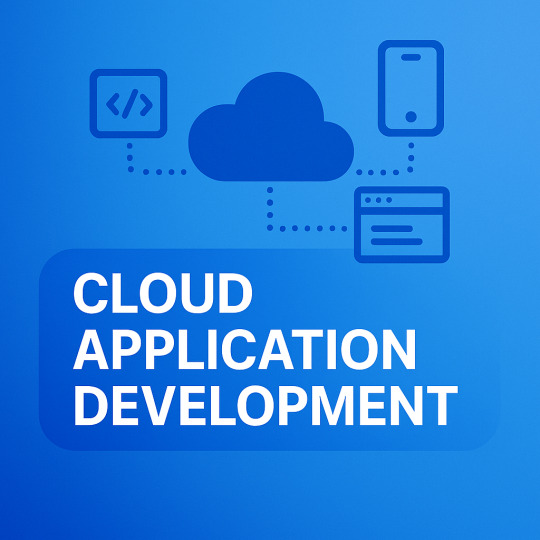
Introduction
In today’s digital-first environment, businesses are constantly seeking scalable, flexible, and cost-effective solutions to stay competitive. One solution that is gaining rapid traction is the hybrid cloud application model. Combining the best of public and private cloud environments, hybrid cloud applications enable businesses to maximize performance while maintaining control and security.
This 2000-word comprehensive article on hybrid cloud applications explains what they are, why they matter, how they work, their benefits, and how businesses can use them effectively. We also include real-user reviews, expert insights, and FAQs to help guide your cloud journey.
What is a Hybrid Cloud Application?
A hybrid cloud application is a software solution that operates across both public and private cloud environments. It enables data, services, and workflows to move seamlessly between the two, offering flexibility and optimization in terms of cost, performance, and security.
For example, a business might host sensitive customer data in a private cloud while running less critical workloads on a public cloud like AWS, Azure, or Google Cloud Platform.
Key Components of Hybrid Cloud Applications
Public Cloud Services – Scalable and cost-effective compute and storage offered by providers like AWS, Azure, and GCP.
Private Cloud Infrastructure – More secure environments, either on-premises or managed by a third-party.
Middleware/Integration Tools – Platforms that ensure communication and data sharing between cloud environments.
Application Orchestration – Manages application deployment and performance across both clouds.
Why Choose a Hybrid Cloud Application Model?
1. Flexibility
Run workloads where they make the most sense, optimizing both performance and cost.
2. Security and Compliance
Sensitive data can remain in a private cloud to meet regulatory requirements.
3. Scalability
Burst into public cloud resources when private cloud capacity is reached.
4. Business Continuity
Maintain uptime and minimize downtime with distributed architecture.
5. Cost Efficiency
Avoid overprovisioning private infrastructure while still meeting demand spikes.
Real-World Use Cases of Hybrid Cloud Applications
1. Healthcare
Protect sensitive patient data in a private cloud while using public cloud resources for analytics and AI.
2. Finance
Securely handle customer transactions and compliance data, while leveraging the cloud for large-scale computations.
3. Retail and E-Commerce
Manage customer interactions and seasonal traffic spikes efficiently.
4. Manufacturing
Enable remote monitoring and IoT integrations across factory units using hybrid cloud applications.
5. Education
Store student records securely while using cloud platforms for learning management systems.
Benefits of Hybrid Cloud Applications
Enhanced Agility
Better Resource Utilization
Reduced Latency
Compliance Made Easier
Risk Mitigation
Simplified Workload Management
Tools and Platforms Supporting Hybrid Cloud
Microsoft Azure Arc – Extends Azure services and management to any infrastructure.
AWS Outposts – Run AWS infrastructure and services on-premises.
Google Anthos – Manage applications across multiple clouds.
VMware Cloud Foundation – Hybrid solution for virtual machines and containers.
Red Hat OpenShift – Kubernetes-based platform for hybrid deployment.
Best Practices for Developing Hybrid Cloud Applications
Design for Portability Use containers and microservices to enable seamless movement between clouds.
Ensure Security Implement zero-trust architectures, encryption, and access control.
Automate and Monitor Use DevOps and continuous monitoring tools to maintain performance and compliance.
Choose the Right Partner Work with experienced providers who understand hybrid cloud deployment strategies.
Regular Testing and Backup Test failover scenarios and ensure robust backup solutions are in place.
Reviews from Industry Professionals
Amrita Singh, Cloud Engineer at FinCloud Solutions:
"Implementing hybrid cloud applications helped us reduce latency by 40% and improve client satisfaction."
John Meadows, CTO at EdTechNext:
"Our LMS platform runs on a hybrid model. We’ve achieved excellent uptime and student experience during peak loads."
Rahul Varma, Data Security Specialist:
"For compliance-heavy environments like finance and healthcare, hybrid cloud is a no-brainer."
Challenges and How to Overcome Them
1. Complex Architecture
Solution: Simplify with orchestration tools and automation.
2. Integration Difficulties
Solution: Use APIs and middleware platforms for seamless data exchange.
3. Cost Overruns
Solution: Use cloud cost optimization tools like Azure Advisor, AWS Cost Explorer.
4. Security Risks
Solution: Implement multi-layered security protocols and conduct regular audits.
FAQ: Hybrid Cloud Application
Q1: What is the main advantage of a hybrid cloud application?
A: It combines the strengths of public and private clouds for flexibility, scalability, and security.
Q2: Is hybrid cloud suitable for small businesses?
A: Yes, especially those with fluctuating workloads or compliance needs.
Q3: How secure is a hybrid cloud application?
A: When properly configured, hybrid cloud applications can be as secure as traditional setups.
Q4: Can hybrid cloud reduce IT costs?
A: Yes. By only paying for public cloud usage as needed, and avoiding overprovisioning private servers.
Q5: How do you monitor a hybrid cloud application?
A: With cloud management platforms and monitoring tools like Datadog, Splunk, or Prometheus.
Q6: What are the best platforms for hybrid deployment?
A: Azure Arc, Google Anthos, AWS Outposts, and Red Hat OpenShift are top choices.
Conclusion: Hybrid Cloud is the New Normal
The hybrid cloud application model is more than a trend—it’s a strategic evolution that empowers organizations to balance innovation with control. It offers the agility of the cloud without sacrificing the oversight and security of on-premises systems.
If your organization is looking to modernize its IT infrastructure while staying compliant, resilient, and efficient, then hybrid cloud application development is the way forward.
At diglip7.com, we help businesses build scalable, secure, and agile hybrid cloud solutions tailored to their unique needs. Ready to unlock the future? Contact us today to get started.
0 notes
Text
Developing and Deploying AI/ML Applications on Red Hat OpenShift AI with Hawkstack
Artificial Intelligence (AI) and Machine Learning (ML) are driving innovation across industries—from predictive analytics in healthcare to real-time fraud detection in finance. But building, scaling, and maintaining production-grade AI/ML solutions remains a significant challenge. Enter Red Hat OpenShift AI, a powerful platform that brings together the flexibility of Kubernetes with enterprise-grade ML tooling. And when combined with Hawkstack, organizations can supercharge observability and performance tracking throughout their AI/ML lifecycle.
Why Red Hat OpenShift AI?
Red Hat OpenShift AI (formerly Red Hat OpenShift Data Science) is a robust enterprise platform designed to support the full AI/ML lifecycle—from development to deployment. Key benefits include:
Scalability: Native Kubernetes integration allows seamless scaling of ML workloads.
Security: Red Hat’s enterprise security practices ensure that ML pipelines are secure by design.
Flexibility: Supports a variety of tools and frameworks, including Jupyter Notebooks, TensorFlow, PyTorch, and more.
Collaboration: Built-in tools for team collaboration and continuous integration/continuous deployment (CI/CD).
Introducing Hawkstack: Observability for AI/ML Workloads
As you move from model training to production, observability becomes critical. Hawkstack, a lightweight and extensible observability framework, integrates seamlessly with Red Hat OpenShift AI to provide real-time insights into system performance, data drift, model accuracy, and infrastructure metrics.
Hawkstack + OpenShift AI: A Powerful Duo
By integrating Hawkstack with OpenShift AI, you can:
Monitor ML Pipelines: Track metrics across training, validation, and deployment stages.
Visualize Performance: Dashboards powered by Hawkstack allow teams to monitor GPU/CPU usage, memory footprint, and latency.
Enable Alerting: Proactively detect model degradation or anomalies in your inference services.
Optimize Resources: Fine-tune resource allocation based on telemetry data.
Workflow: Developing and Deploying ML Apps
Here’s a high-level overview of what a modern AI/ML workflow looks like on OpenShift AI with Hawkstack:
1. Model Development
Data scientists use tools like JupyterLab or VS Code on OpenShift AI to build and train models. Libraries such as scikit-learn, XGBoost, and Hugging Face Transformers are pre-integrated.
2. Pipeline Automation
Using Red Hat OpenShift Pipelines (Tekton), you can automate training and evaluation pipelines. Integrate CI/CD practices to ensure robust and repeatable workflows.
3. Model Deployment
Leverage OpenShift AI’s serving layer to deploy models using Seldon Core, KServe, or OpenVINO Model Server—all containerized and scalable.
4. Monitoring and Feedback with Hawkstack
Once deployed, Hawkstack takes over to monitor inference latency, throughput, and model accuracy in real-time. Anomalies can be fed back into the training pipeline, enabling continuous learning and adaptation.
Real-World Use Case
A leading financial services firm recently implemented OpenShift AI and Hawkstack to power their loan approval engine. Using Hawkstack, they detected a model drift issue caused by seasonal changes in application data. Alerts enabled retraining to be triggered automatically, ensuring their decisions stayed fair and accurate.
Conclusion
Deploying AI/ML applications in production doesn’t have to be daunting. With Red Hat OpenShift AI, you get a secure, scalable, and enterprise-ready foundation. And with Hawkstack, you add observability and performance intelligence to every stage of your ML lifecycle.
Together, they empower organizations to bring AI/ML innovations to market faster—without compromising on reliability or visibility.
For more details www.hawkstack.com
0 notes
Text
How much can energy harvesting cut maintenance costs for remote IoT sensors
Cloud Native Applications Market was valued at USD 6.49 billion in 2023 and is expected to reach USD 45.71 billion by 2032, growing at a CAGR of 24.29% from 2024-2032.
The Cloud Native Applications Market: Pioneering the Future of Digital Transformation is experiencing an unprecedented surge, driven by the imperative for businesses to achieve unparalleled agility, scalability, and resilience in a rapidly evolving digital economy. This architectural shift, emphasizing microservices, containers, and automated orchestration, is not merely a technological upgrade but a fundamental re-imagining of how software is conceived, developed, and deployed.
U.S. Businesses Lead Global Charge in Cloud-Native Adoption
The global Cloud Native Applications Market is a dynamic and rapidly expanding sector, foundational to modern enterprise IT strategies. It empowers organizations to build, deploy, and manage applications that fully leverage the inherent advantages of cloud computing. This approach is characterized by modularity, automation, and elasticity, enabling businesses to accelerate innovation, enhance operational efficiency, and significantly reduce time-to-market for new services. The market's robust growth is underpinned by the increasing adoption of cloud platforms across various industries, necessitating agile and scalable software solutions.
Get Sample Copy of This Report: https://www.snsinsider.com/sample-request/6545
Market Keyplayers:
Google LLC (Google Kubernetes Engine, Firebase)
International Business Machines Corporation (IBM Cloud, IBM Cloud Pak)
Infosys Technologies Private Limited (Infosys Cobalt, Cloud Ecosystem)
Larsen & Toubro Infotech (LTI Cloud, LTI Digital Transformation)
Microsoft Corporation (Azure Kubernetes Service, Azure Functions)
Oracle Corporation (Oracle Cloud Infrastructure, Oracle Autonomous Database)
Red Hat (OpenShift, Ansible Automation Platform)
SAP SE (SAP Business Technology Platform, SAP S/4HANA Cloud)
VMware, Inc. (VMware Tanzu, VMware Cloud on AWS)
Alibaba Cloud (Alibaba Cloud Container Service, Alibaba Cloud Elastic Compute Service)
Apexon (Cloud-Native Solutions, Cloud Application Modernization)
Bacancy Technology (Cloud Development, Cloud-Native Microservices)
Citrix Systems, Inc. (Citrix Workspace, Citrix Cloud)
Harness (Harness Continuous Delivery, Harness Feature Flags)
Cognizant Technology Solutions Corp (Cognizant Cloud, Cognizant Cloud-Native Solutions)
Ekco (Cloud Infrastructure Services, Cloud Application Development)
Huawei Technologies Co. Ltd. (Huawei Cloud, Huawei Cloud Container Engine)
R Systems (R Systems Cloud Platform, R Systems DevOps Solutions)
Scality (Scality RING, Scality Cloud Storage)
Sciencesoft (Cloud-Native Development, Cloud Integration Solutions)
Market Trends
Microservices Architecture Dominance: A widespread shift from monolithic applications to independent, smaller services, enhancing flexibility, fault tolerance, and rapid deployment cycles.
Containerization and Orchestration: Continued and expanding reliance on container technologies like Docker and orchestration platforms such as Kubernetes for efficient packaging, deployment, and management of applications across diverse cloud environments.
DevOps and CI/CD Integration: Deep integration of DevOps practices and Continuous Integration/Continuous Delivery (CI/CD) pipelines, automating software delivery, improving collaboration, and ensuring frequent, reliable updates.
Hybrid and Multi-Cloud Strategies: Increasing demand for cloud-native solutions that can seamlessly operate across multiple public cloud providers and on-premises hybrid environments, promoting vendor agnosticism and enhanced resilience.
Rise of Serverless Computing: Growing interest and adoption of serverless functions, allowing developers to focus solely on code without managing underlying infrastructure, further reducing operational overhead.
AI and Machine Learning Integration: Leveraging cloud-native principles to build and deploy AI/ML-driven applications, enabling real-time data processing, advanced analytics, and intelligent automation across business functions.
Enhanced Security Focus: Development of security-first approaches within cloud-native environments, including zero-trust models, automated compliance checks, and robust data protection mechanisms.
Market Scope: Unlocking Limitless Potential
Beyond Infrastructure: Encompasses not just the underlying cloud infrastructure but the entire lifecycle of application development, from conceptualization and coding to deployment, scaling, and ongoing management.
Cross-Industry Revolution: Transforming operations across a vast spectrum of industries, including BFSI (Banking, Financial Services, and Insurance), Healthcare, IT & Telecom, Retail & E-commerce, Manufacturing, and Government.
Scalability for All: Provides unprecedented scalability and cost-efficiency benefits to organizations of all sizes, from agile startups to sprawling large enterprises.
Platform to Service: Includes robust cloud-native platforms that provide the foundational tools and environments, alongside specialized services that support every stage of the cloud-native journey.
The Cloud Native Applications Market fundamentally reshapes how enterprises harness technology to meet dynamic market demands. It represents a paradigm shift towards highly adaptable, resilient, and performant digital solutions designed to thrive in the cloud.
Forecast Outlook
The trajectory of the Cloud Native Applications Market points towards sustained and exponential expansion. We anticipate a future where cloud-native principles become the de facto standard for new application development, driving widespread modernization initiatives across industries. This growth will be fueled by continuous innovation in container orchestration, the pervasive influence of artificial intelligence, and the increasing strategic importance of agile software delivery. Expect to see further refinement in tools that simplify cloud-native adoption, foster open-source collaboration, and enhance the developer experience, ultimately empowering businesses to accelerate their digital transformation journeys with unprecedented speed and impact. The market will continue to evolve, offering richer functionalities and more sophisticated solutions that redefine business agility and operational excellence.
Access Complete Report: https://www.snsinsider.com/reports/cloud-native-applications-market-6545
Conclusion:
The Unstoppable Ascent of Cloud-Native The Cloud Native Applications Market is at the vanguard of digital innovation, no longer a niche technology but an indispensable pillar for any organization striving for competitive advantage. Its emphasis on agility, scalability, and resilience empowers businesses to not only respond to change but to actively drive it. For enterprises seeking to unlock new levels of performance, accelerate time-to-market, and cultivate a culture of continuous innovation, embracing cloud-native strategies is paramount. This market is not just growing; it is fundamentally reshaping the future of enterprise software, promising a landscape where adaptability and rapid evolution are the keys to sustained success.
About Us:
SNS Insider is one of the leading market research and consulting agencies that dominates the market research industry globally. Our company's aim is to give clients the knowledge they require in order to function in changing circumstances. In order to give you current, accurate market data, consumer insights, and opinions so that you can make decisions with confidence, we employ a variety of techniques, including surveys, video talks, and focus groups around the world.
Contact Us:
Jagney Dave - Vice President of Client Engagement
Phone: +1-315 636 4242 (US) | +44- 20 3290 5010 (UK)
Mail us: [email protected]
0 notes